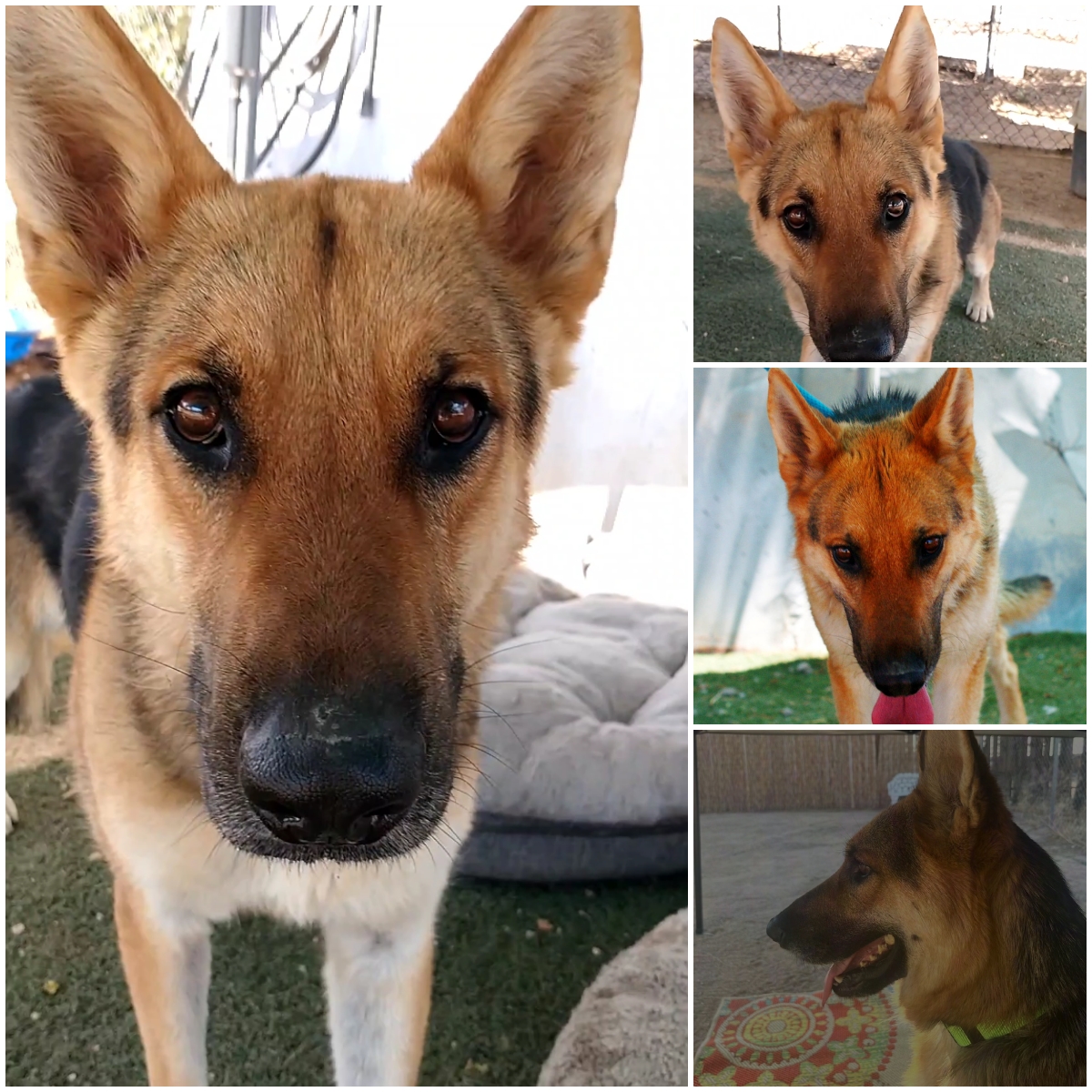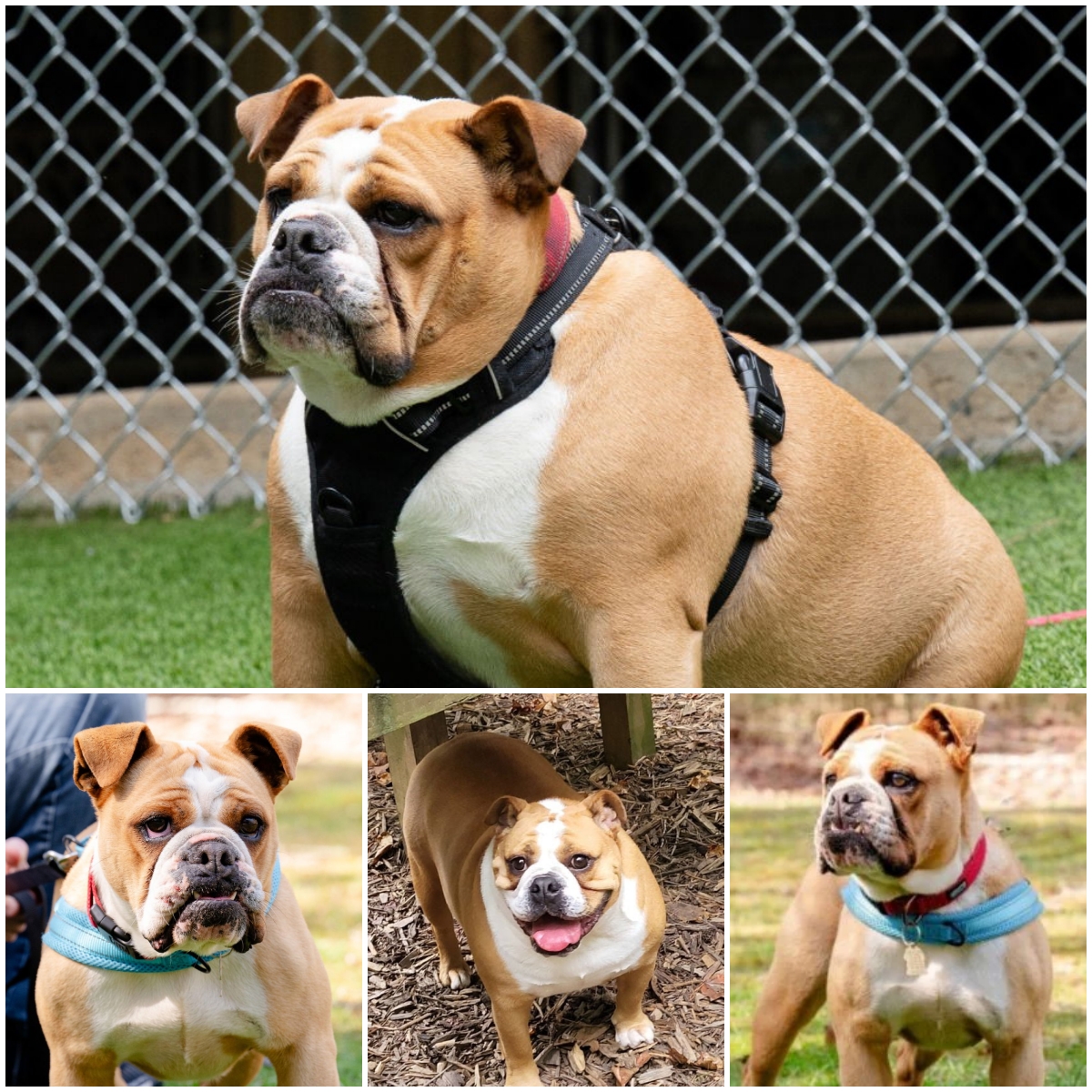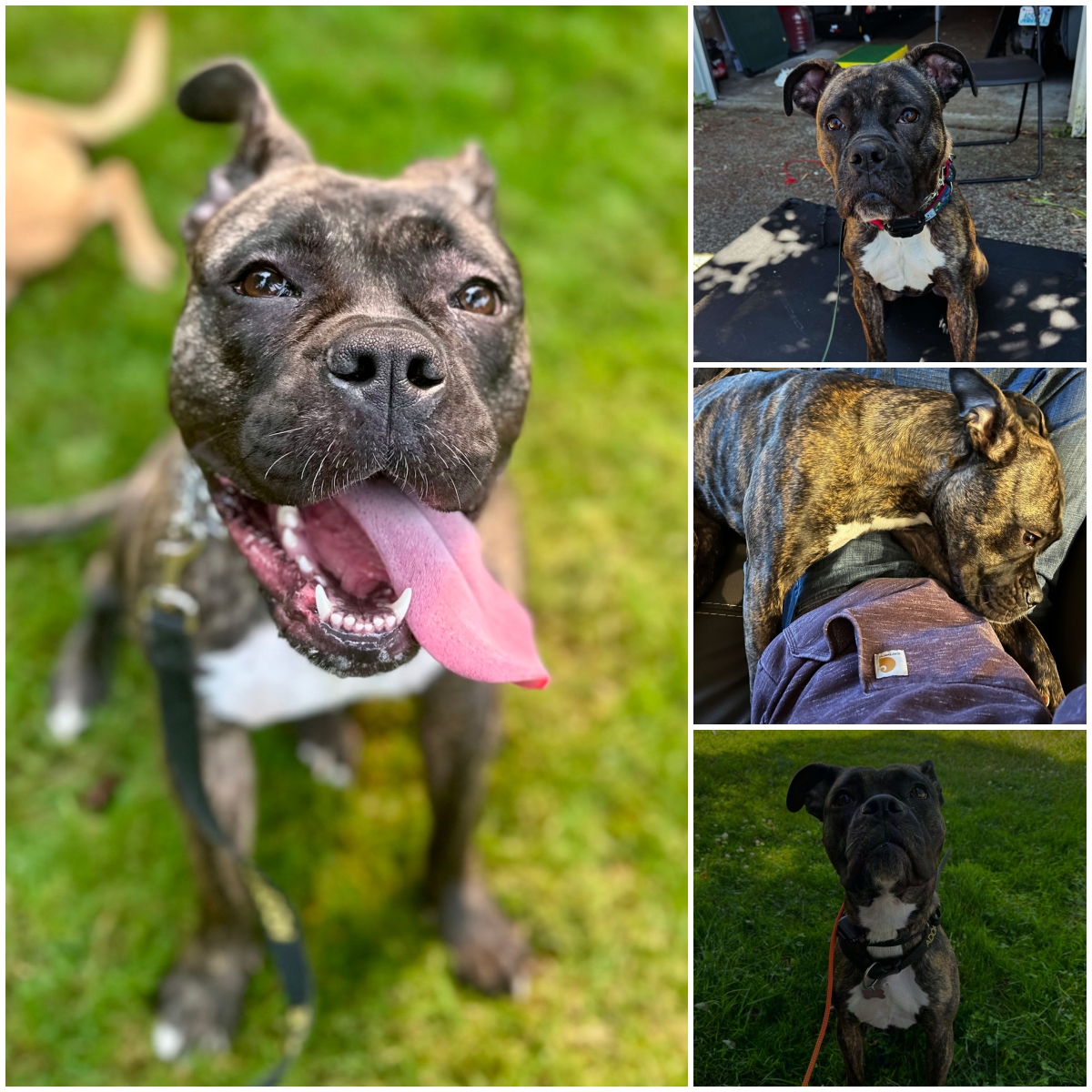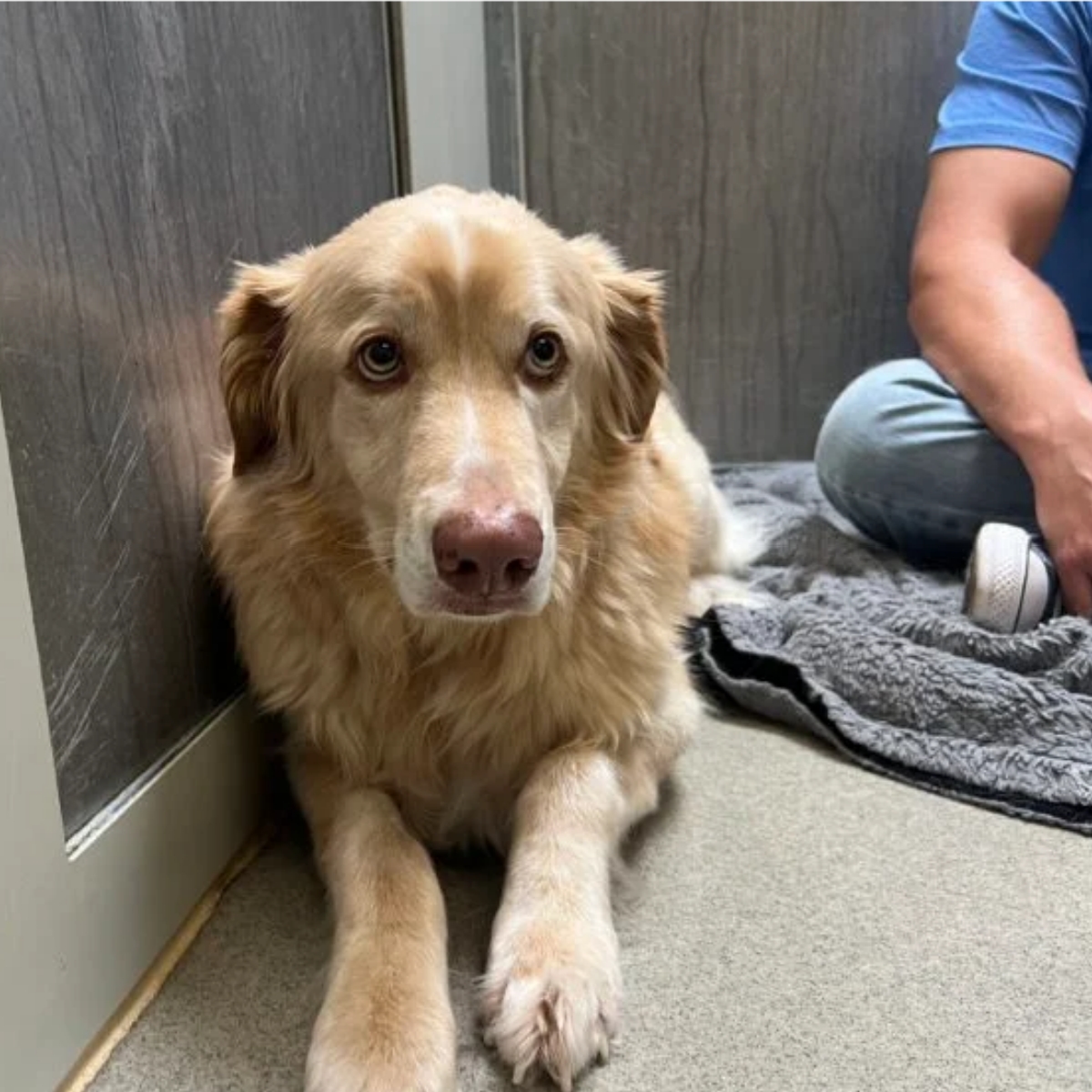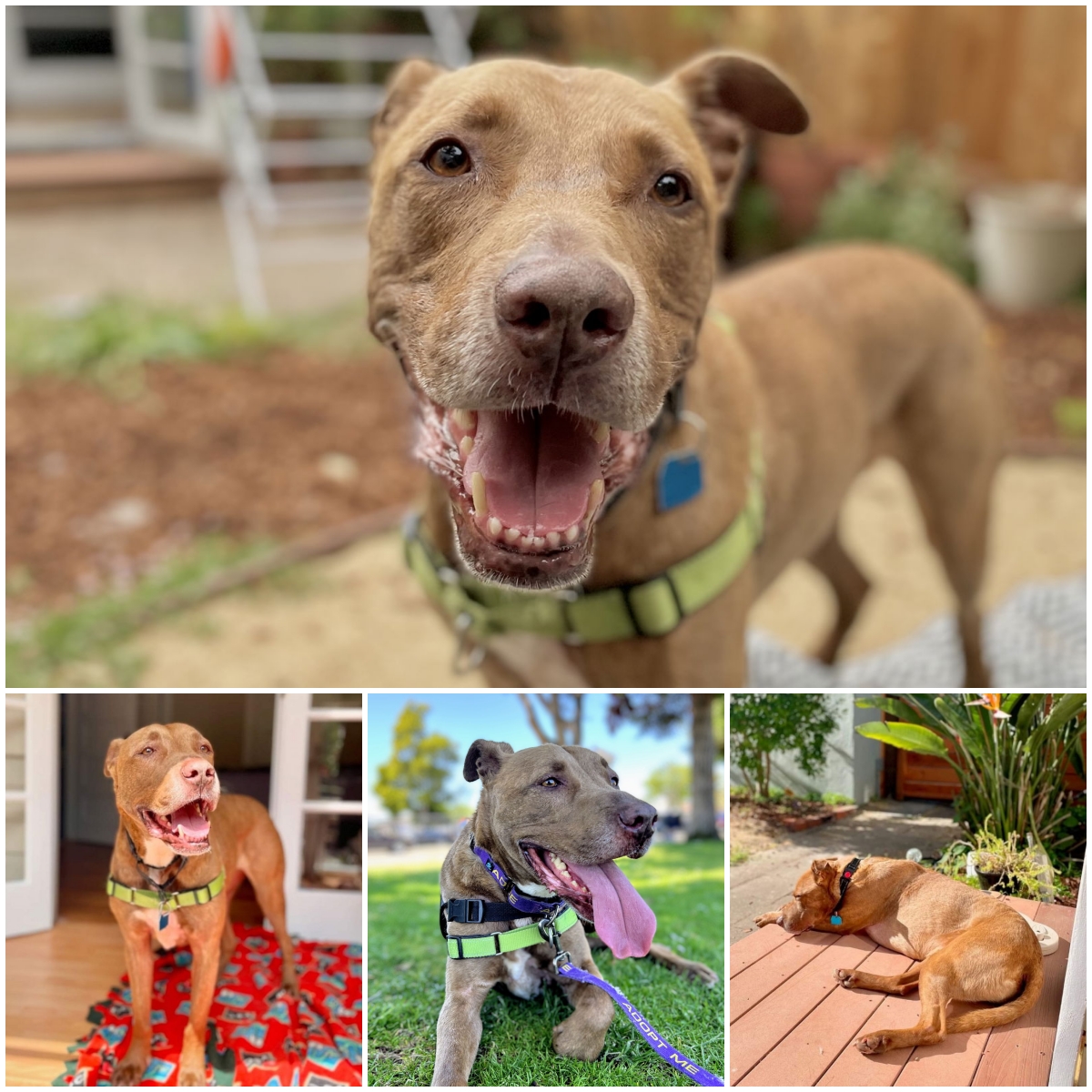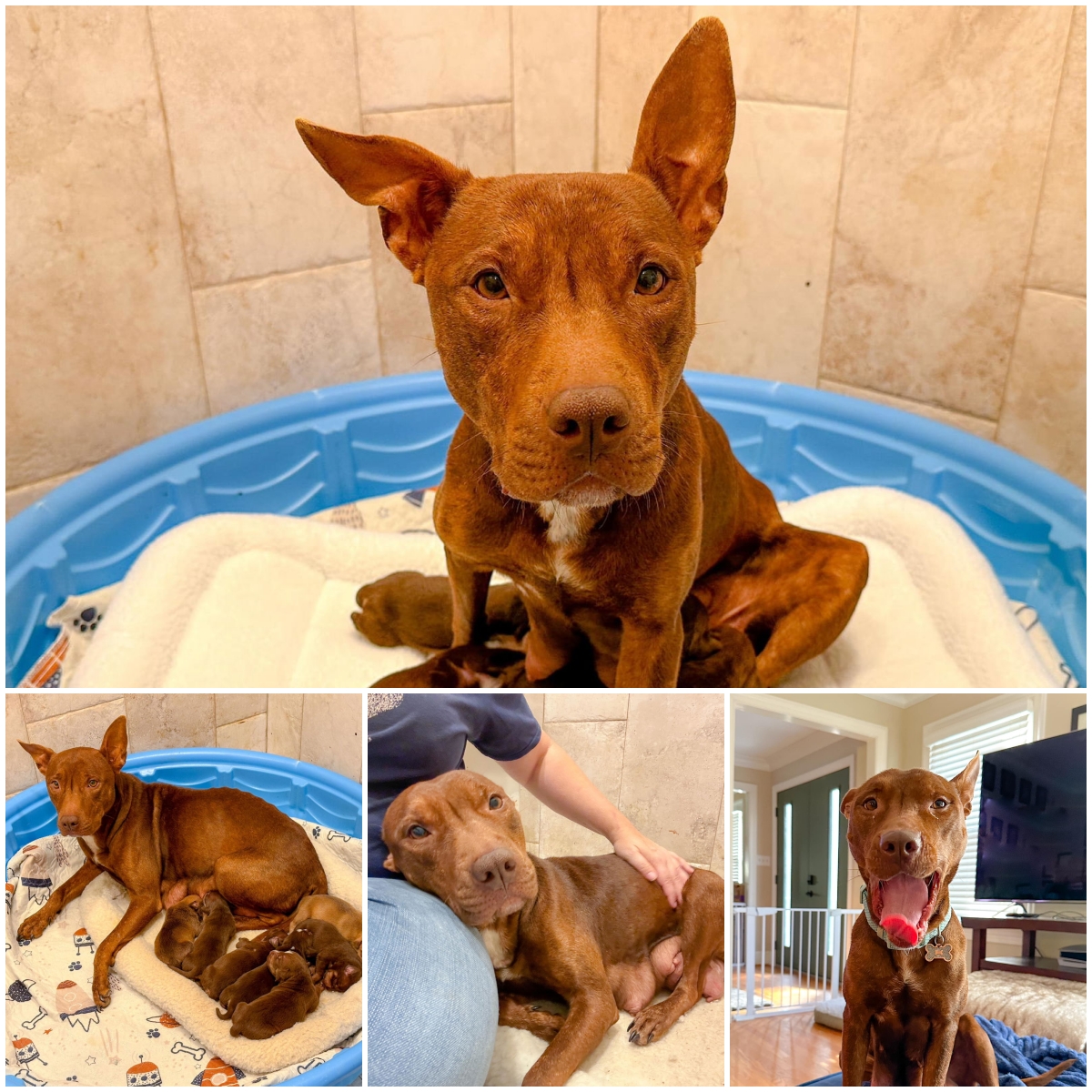Being the most popular breed in the U.S., French Bulldogs have to bear the brunt of unethical breeding practices. One such victim is Josie Autumngrove, a Frenchie dumped at the vet’s office with too many serious health issues to count.
Josie was rescued by Roadogs Rescue,, a Southern California-based organization. During her medical exam, they found that what was initially thought to be a mass was actually a hernia, and shockingly, her entire uterus had passed through it. This likely resulted from being repeatedly bred without proper care, combined with poorly performed C-sections by unqualified veterinarians.
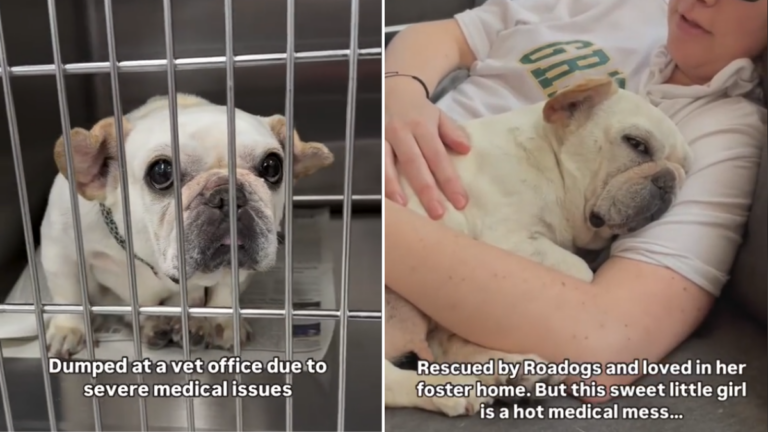
Fortunately, Josie went through a successful surgical correction for hernia, in which all of her organs were put back together in the right manner. But that was just one of the many problems that the dog had. She had ear hematoma and multiple eye and mouth masses. The masses were surgically removed and sent to histopathology.
@roadogsrescue This is why we rescue! Josie Autumngrove was given botched surgeries by dodgy vets but she is safe and loved with Roadogs now. Show her some love and let her know you care ️️ #frenchielover #frenchielove #rescuedog original sound – roadogsrescue
In addition, Josie previously had a poorly performed airway surgery by an ill-suited vet, which left her elongated soft palate untouched. Instead, they took out her saccules and tonsils, resulting in scar tissue and calcifications.
The rescue’s specialist surgeon was thankfully able to fix all these issues. Josie was also able to recover from laryngeal paralysis.

Josie is now healing in a loving foster home, finally pain-free in a long time. All this has been made possible by the amazing efforts of Roadogs. They not only rescued Josie but helped her begin a new life, free of health complications. She can now leave her dark past behind and have a shot at a happy ending.
Also Read:Her Matting Was So Severe, Vets Struggled to See if She Was Spayed – Then Came the Makeover!
However, the journey to get Josie healthy came at a high cost. All in all, the rescue spent about $4,000 on the dog’s medical care. So, this rescue needs constant help and support from people like you to allow them to save many other dogs like Josie.
You can be Josie’s guardian angel and sponsor her medical costs or you can donate to the rescue whatever amount you can. Go to this link for more information.
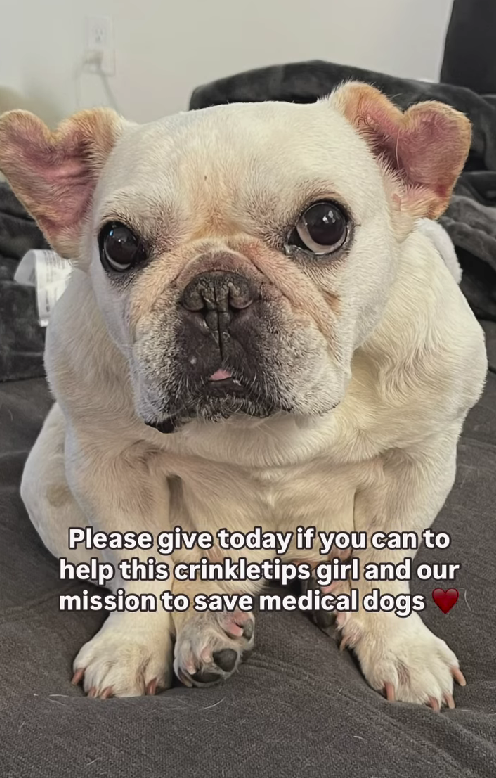
A certified professional dog trainer, Stephanie Gibeault, says, “Hernias in dogs are actually quite common. Just as in people, a hernia occurs when an organ or tissue protrudes through a tear or hole in the wall of a body cavity and appears in a different area from where it should normally be.”
While most hernias aren’t life-threatening, it’s crucial to have them examined by a veterinarian. This is because hernias carry risks, including strangulation, interruption of blood flow, or obstruction, which can compromise the health of the affected organ.
Dr. Jerry Klein, Chief Veterinary Officer for the American Kennel Club classifies hernias in dogs into five types based on their location:
- Diaphragmatic Hernia in Dogs: Occurs when there’s a tear in the diaphragm, allowing abdominal organs like the stomach to enter the chest cavity. Since this happens internally, no external bulge is visible.
- Hiatal Hernia in Dogs: Involves the natural opening between the esophagus and stomach, where abdominal organs may protrude. Like diaphragmatic hernias, they don’t display external signs.
- Inguinal Hernia in Dogs: Characterized by abdominal organs pushing through the inguinal canal in the groin area, creating a visible bulge where the hind leg meets the belly.
- Perineal Hernia in Dogs: Result from muscle ruptures in the pelvic diaphragm, causing organs like the prostate or bladder to protrude. This leads to swelling around the anus.
- Umbilical Hernia in Dogs: Also known as navel hernia in dogs, it occurs around the belly button, where abdominal fat or organs push out, forming a visible bulge on the stomach just below the rib cage.
Each type requires veterinary attention to assess potential risks and determine appropriate treatment.
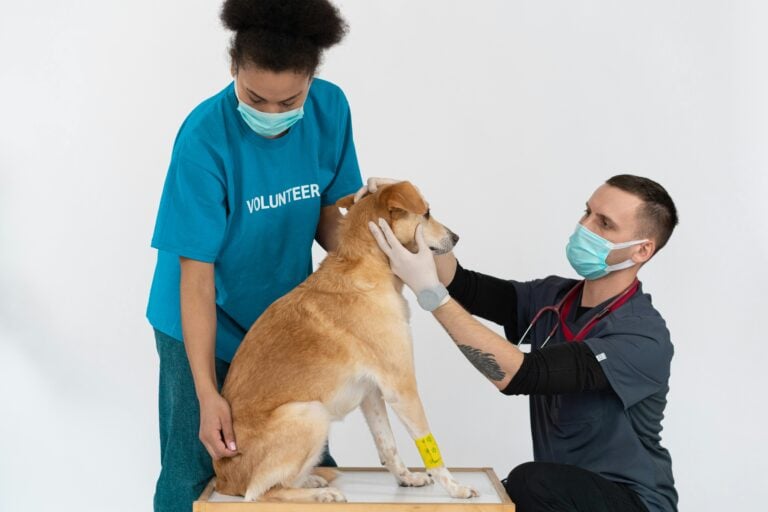
According to Dr. Klein, hernias in dogs can be attributed to three primary causes: genetics, trauma, and underlying medical conditions.
These hernias are present at birth and can affect various organs. Umbilical hernias, the most common type, always originate from a congenital issue. During fetal development, blood vessels pass through the umbilical ring. Normally, this ring closes after birth, but in some cases, it remains open, allowing organs to protrude.
These can result from traumatic injuries, such as:
- Being hit by a car causes internal tears and organ displacement.
- Animal bite wounds can tear internal muscles while leaving the skin intact.
Underlying medical conditions, including:
- Chronic straining during defecation contributes to perineal hernias
- Chronic esophagitis, potentially leading to hiatal hernias
- Pregnancy
Also Read:Vet Makes Unusual Discovery that Saves Limping Dog From Hefty Vet Bill
Is there a possibility that a dog gets a hernia after the spay procedure? The answer is yes, but it is incredibly uncommon. Animal Trust Organization in the UK states it “may occur due to a weakness in the suture line or overexertion post-surgery.”
It is important to understand the underlying cause of hernia in dogs for effective diagnosis and treatment.
Hernias in dogs vary in size, location, and type, resulting in diverse symptoms. While some small hernias may show no signs beyond a visible bulge, others can exhibit behavioral and physical changes. Here are common symptoms associated with each hernia type:
Diaphragmatic Hernias
- Rapid, shallow breathing
Inguinal Hernias
- Difficulty urinating (if the bladder is trapped)
Hiatal Hernias
- Vomiting
- Bloody vomit
- Regurgitation
- Drooling
- Breathing difficulties
Perineal Hernias
- Straining during defecation
Umbilical Hernias
Typically, there is only a visible bulge (in mild cases). In rare cases, umbilical hernias can trap organs like the bowel, bladder, or small intestine, cutting off blood supply and requiring emergency surgery to prevent severe damage. Symptoms of this will be:
- Severe pain
- Lethargy
- Loss of appetite
- Nausea
- Vomiting (due to organ strangulation, requiring emergency surgery)
It’s essential to monitor your dog’s behavior and physical condition and consult a veterinarian if you suspect a hernia or notice any unusual symptoms.

According to Godspeed Animal Care, an animal hospital in Virginia, “To diagnose a hernia, your vet may perform a physical examination and diagnostic tests like bloodwork, X-rays and ultrasounds. These can also identify any additional medical issues that may be present due to the hernia.”
As a pet owner, you might be wondering about the medical treatment for hernia in dogs and “how long can a dog live with a hernia?” As per experts on Wag, the lifespan of a dog with a hernia depends on the severity of the condition. In some cases, no treatment is necessary, and small inguinal hernias may close on their own, especially in male dogs.
A Reddit user, u/Janellewpg, wrote, “One of mine has a very very tiny umbilical one, it was so small the vet decided it didn’t need to be fixed at neutering.”
Also Read:Dog Wouldn’t Eat After Being Abandoned & Abused—Then Vets Found the Hidden Cause of His Suffering
Let’s take a look at the different treatment options:
- Conservative Management: Mild cases may require only monitoring, and the hernia may resolve itself.
- Reduction: If the hernia is reducible, the protruding tissue can be manually pushed back into place.
- Medication: Oral antacids may be prescribed for non-life-threatening cases.
- Surgery: Necessary for severe cases involving blockages, blood supply constriction, or tissue attachment to other organs.
On average, the cost of the surgical repair is around $1,600. Following surgery, the typical healing time is 10-14 days. Fortunately, the prognosis for dogs undergoing hernia surgery is generally very positive, with most dogs making a full and normal recovery.
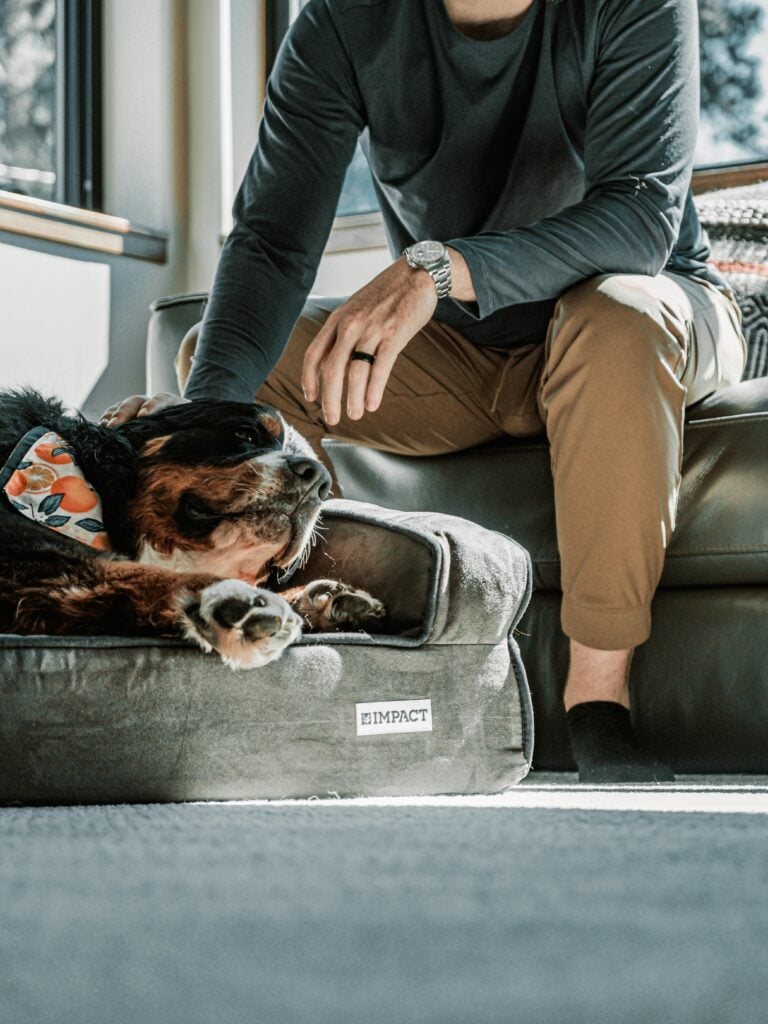
While congenital hernias can’t be prevented, you can reduce your dog’s risk of developing trauma-induced hernias by:
- Creating a safe environment: Supervise your dog indoors and outdoors to minimize potential hazards.
- Establishing boundaries: Teach your dog yard limits and ensure they respond to recall commands to prevent escape attempts.
- Using leashes wisely: Keep your dog on a leash when not in fenced areas or indoors, and practice good leash etiquette to maintain control.
- Preventing distractions: Train your dog to focus on you despite external distractions.
1. What is a hernia in dogs and how does it occur?
A hernia in dogs occurs when an organ or tissue pushes through a weak spot in the muscle wall, often in the abdominal muscles. This condition can affect the abdominal cavity, leading to the displacement of organs such as the intestines. Hernias in dogs can be congenital or result from trauma, excessive strain, or complications from surgery.
2. What are the types of hernias found in dogs?
Dogs can develop different types of hernias, including umbilical, inguinal, diaphragmatic, and hiatal hernias. Inguinal hernias occur when abdominal organs pass through the inguinal rings, small openings in the lower abdominal area. This type is more common in pregnant female dogs and requires prompt medical attention.
3. How can a hernia affect the abdominal cavity in dogs?
When a hernia occurs, it causes a portion of the internal organs, such as the intestines or bladder, to push through the abdominal muscles and into the abdominal cavity. This can lead to serious complications like organ entrapment, restricted blood flow, or tissue death, all of which require surgical intervention to repair.
4. Is surgical intervention always necessary for a dog with a hernia?
While some minor hernias may heal on their own, most hernias in dogs, particularly those affecting the abdominal cavity, require surgical intervention to prevent complications. Surgery is often necessary to return the displaced organs to their proper location and to repair the weakened muscle wall.
5. Can both dogs and cats develop hernias?
Yes, hernias can occur in both dogs and cats. They can result from congenital defects, trauma, or post-surgical complications. In both species, hernias are most commonly found in areas with weaker tissue, such as the diaphragm, umbilical region, or inguinal rings.
6. How are inguinal hernias in dogs treated?
Inguinal hernias, where organs protrude through the inguinal rings near the groin, typically require surgical repair. During surgery, the veterinarian will reposition the organs inside the abdominal cavity and strengthen the muscle wall to prevent recurrence.
7. What are the signs of a hernia in dogs?
Common signs of a hernia in dogs include swelling or a noticeable lump under the skin, pain, difficulty breathing, or issues with digestion. If the hernia involves the abdominal muscles, you may notice bulging near the stomach. Immediate veterinary care is essential to prevent complications, especially if surgery is needed.
Also Read:This Staffy Dog Would ‘Scream in Pain’ Until Vet Discovered Mystery Illness Ailing Her
